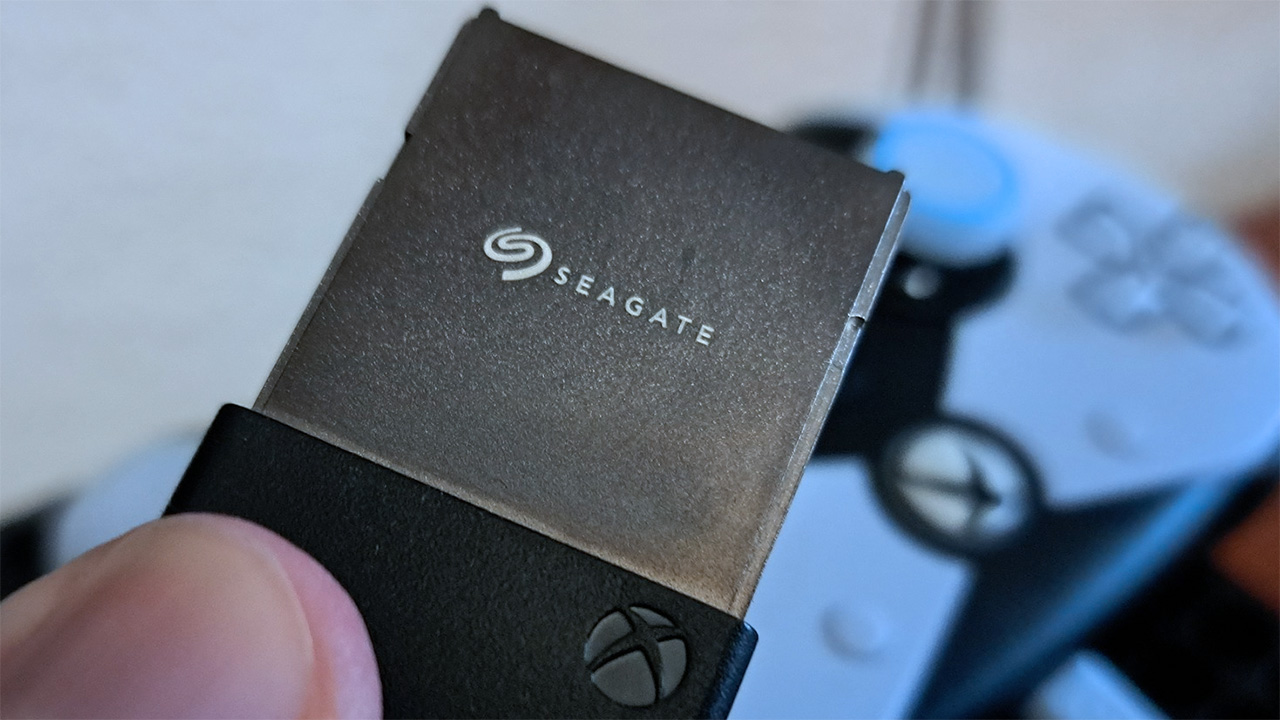World's first foldable Windows PC is here, it's from Lenovo, and it's AWESOME
Foldable PCs are coming in 2020 and Lenovo has the world's first. We go hands-on with the future.
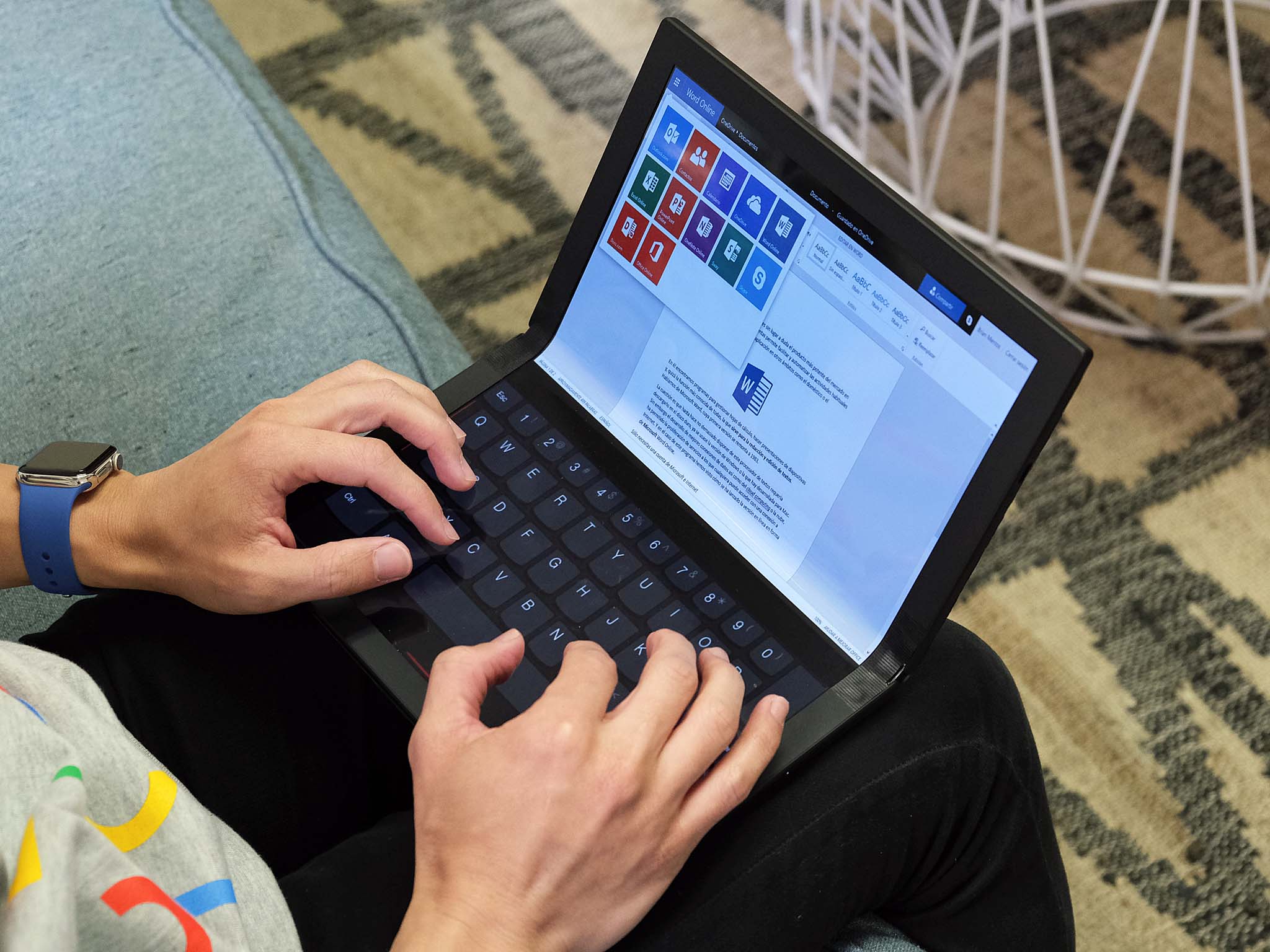
In October 2017, we first reported that Microsoft was working on a foldable PC. A few months later we wrote that dual-screen PCs were also on their way. While that vision has evolved from "Andromeda" to "Centaurus," the initiative to reinvent PCs for the future went unabated.
Today, the foldable PC is becoming a reality. Lenovo just teased its forthcoming book-like Windows device coming in 2020. Although there are only a few prototypes in existence, we got to spend some time with one.
Specs and features
What we know about Lenovo's ThinkPad X1 foldable PC
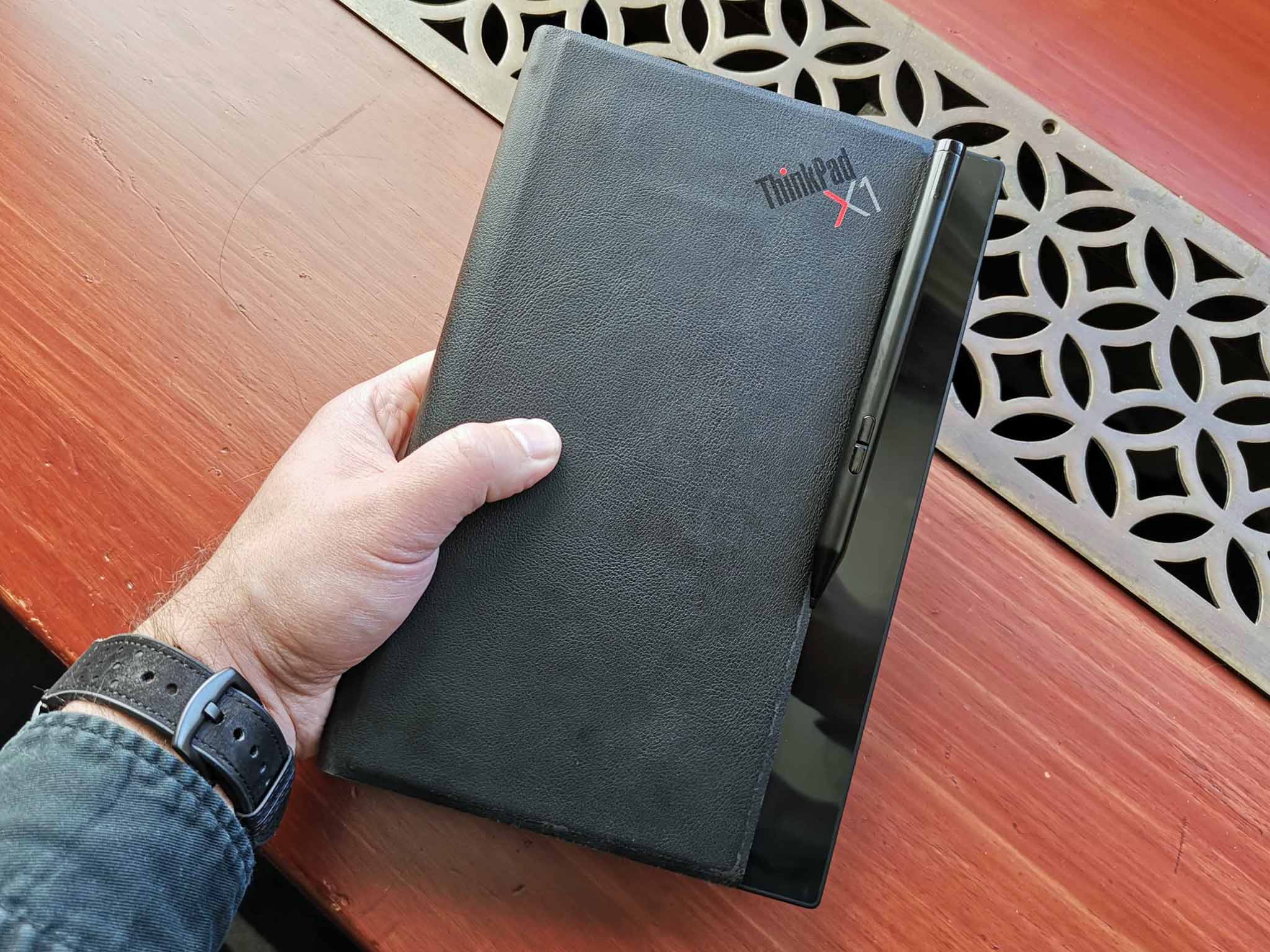
Lenovo teased the foldable PC at its Accelerate conference with a quick look at what it can do, who it's geared for, and what the future of Windows will bring. It has been under development for the last three years, with much of the work taking place in Japan.
The foldable PC does not yet have a name, but it is a part of the ThinkPad X1 line, which is Lenovo's premium offerings that also face stringent ruggedness testing. There is no price yet. There is no release date, but it is expected sometime in 2020.
Lenovo ThinkPad X1 foldable PC specs
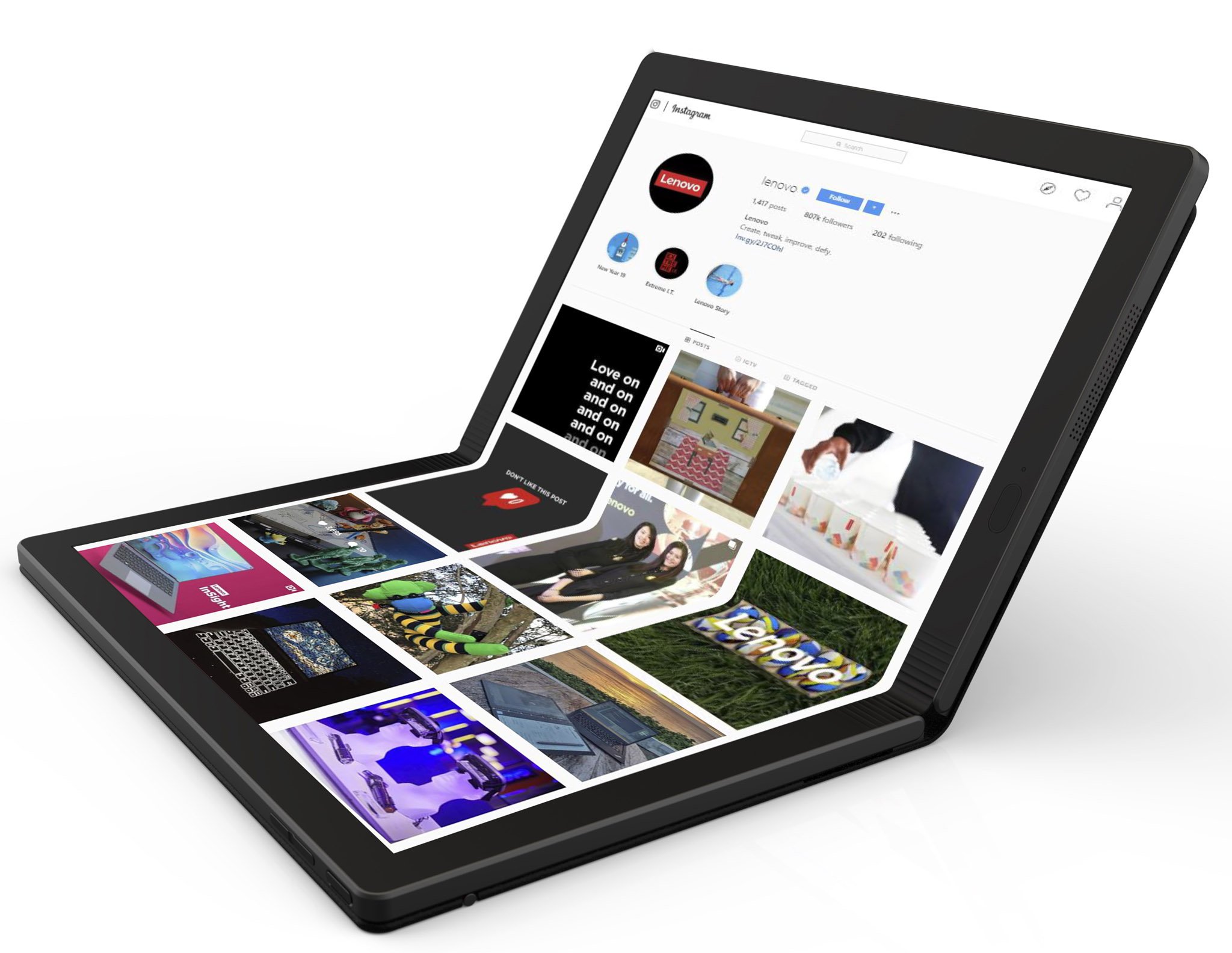
| Category | Spec |
|---|---|
| OS | "Windows-based device" |
| Processor | Unannounced Intel platform |
| RAM | N/A |
| Graphics | Intel |
| Storage | N/A |
| Display | 13.3-inch 2k OLED 4:3 aspect Touch and inking supported |
| Pen | Wacom AES |
| Ports | Two USB Type C |
| Audio | Stereo speakers (Dolby) |
| Wireless | W-Fi and 4G LTE |
| Camera | Front-facing IR camera with Windows Hello |
| Keyboard | Bluetooth |
| Touchpad | None |
| Battery | N/A |
| Dimensions | N/A |
| Weight | Less than 2lbs (< 907 grams) |
What OS it runs is not evident. While the prototype we saw was running full Windows 10, Lenovo was quick to point out that this was only for the demonstration. Instead, Lenovo wants us to say it's a "Windows-based device", which is a smart way of avoiding talking about the "Windows "Lite" OS, which is what we're expecting to be featured on this – and other – foldable PCs.
The screen is 13.3-inches OLED at a 2K resolution, with full touch features. The hinge is a torque design that allows the screen to bend and hold into a variety of angles, not just opened or closed.
All the latest news, reviews, and guides for Windows and Xbox diehards.
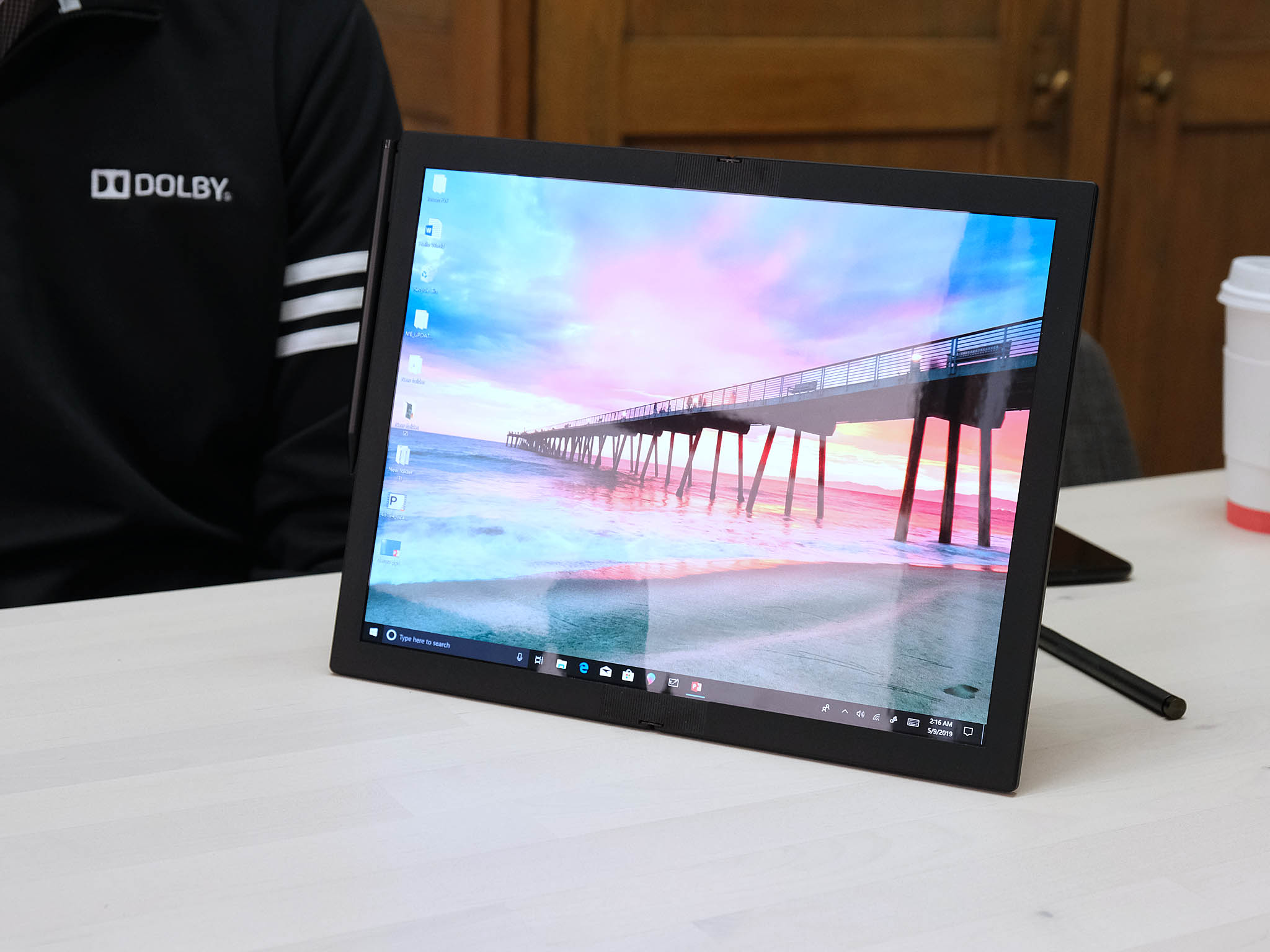
LG – not Samsung – makes the display technology, and it doesn't have quite the visible crease that is found with the Galaxy Fold. Likewise, there is an anti-scratch layer built into the display versus being a sticker on top.
The most significant difference, though, between the Lenovo foldable PC and Galaxy Fold (and Huawei Mate X) is Lenovo supports inking; not only can you draw on the screen, a high-end Wacom digitizer gives it a smooth and accurate drawing experience.
For a processor, Lenovo is using an unannounced Intel-based one – likely part of Intel's 10nm mobile lineup, due in early 2020.
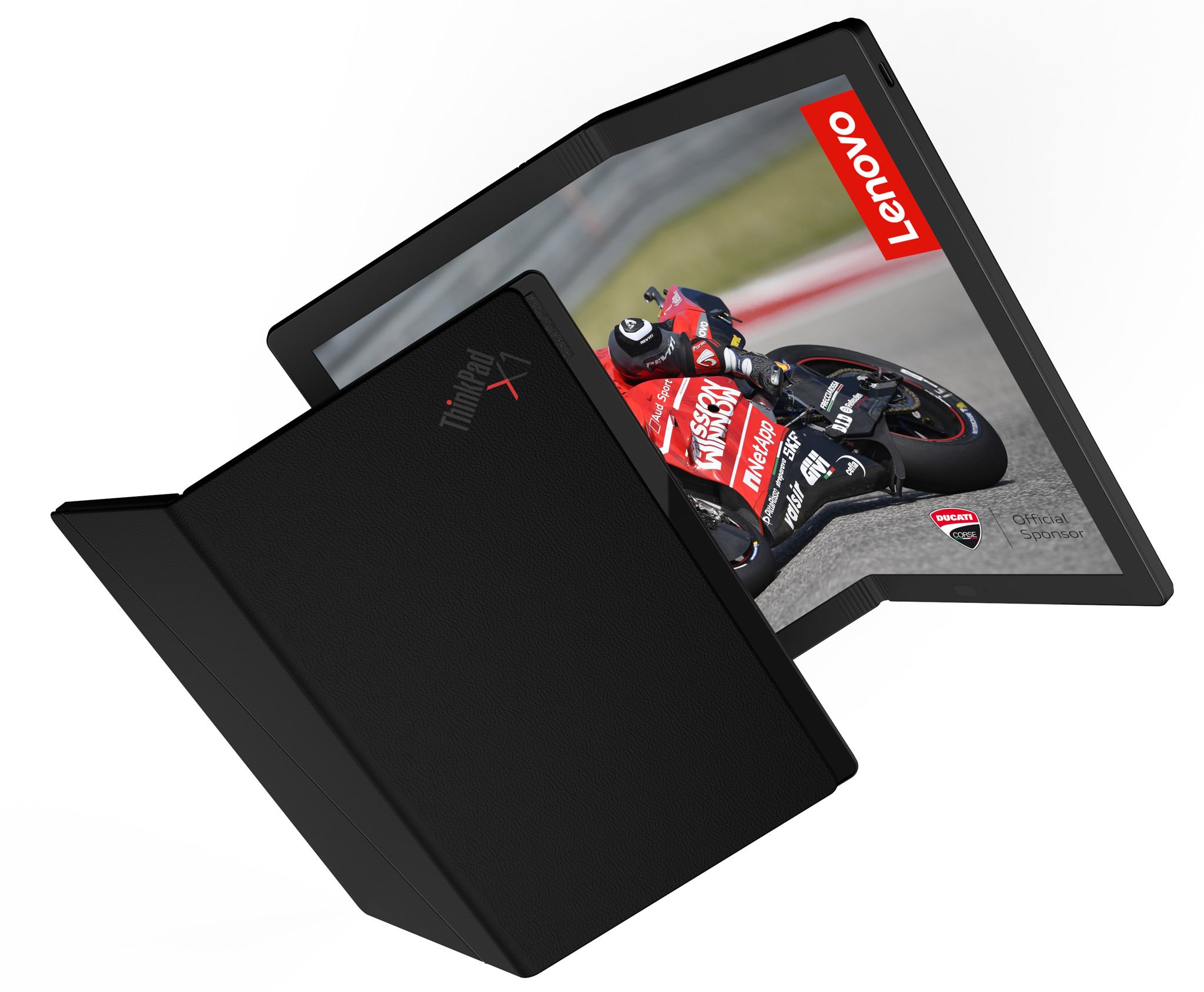
4G LTE is also part of the package, which makes this PC a real "use anywhere" device. For ports, there are two USB Type-C, which can be used to connect to an external display, add a mouse, keyboard, or storage. While not on the prototype unit, there is also support for Windows Hello for bio-authentication using an infrared camera system. Stereo speakers flank the screen to deliver what is expected to be very decent audio.
Highly mobile
So who is Lenovo's ThinkPad X1 foldable PC for?
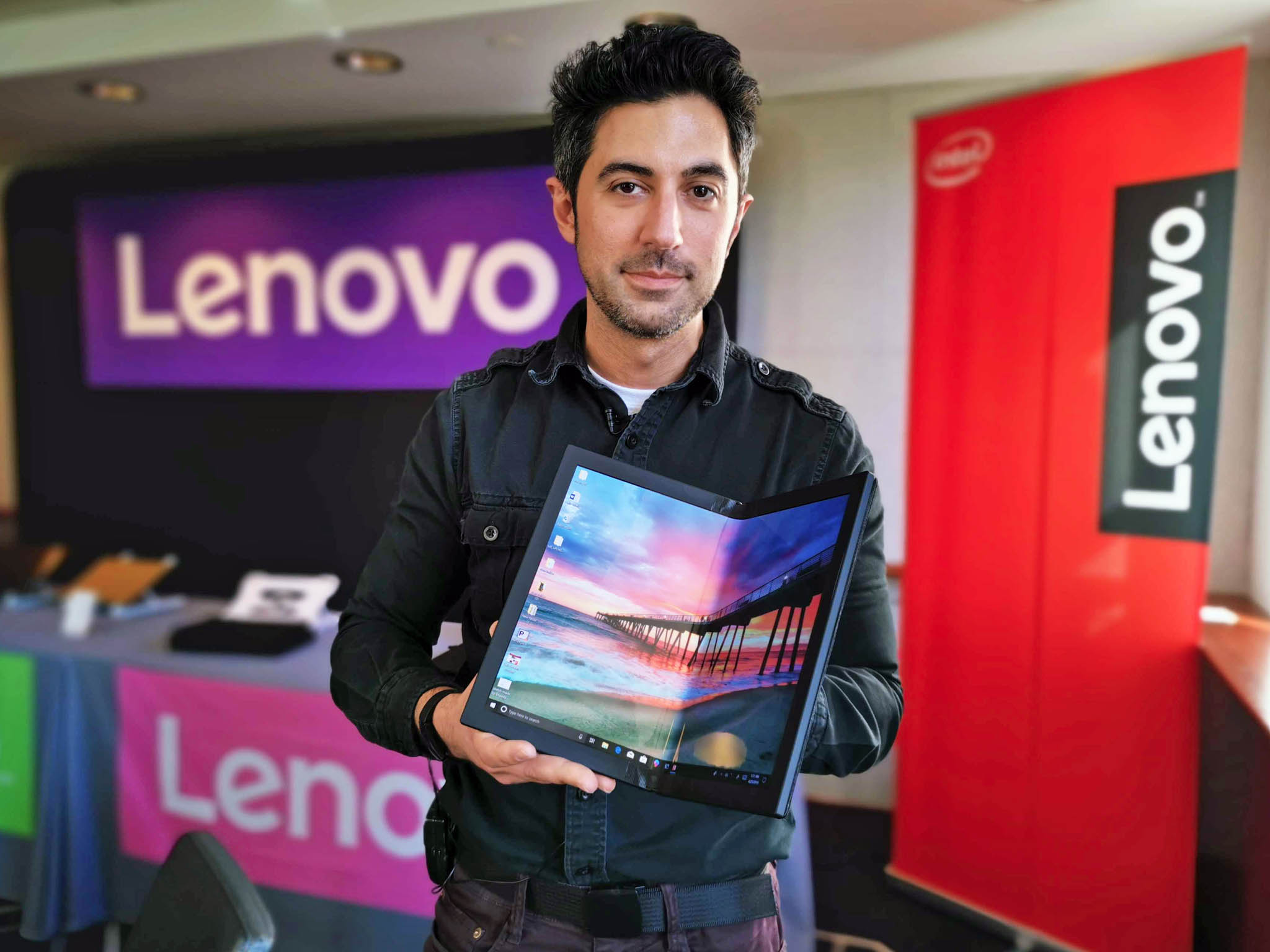
Delivering a new paradigm for computing means the audience targeted will naturally be smaller. Lenovo sees this foldable computer as "a primary PC that can replace your laptop" and ideal for "road warriors and business executives that are highly mobile, as well as tech enthusiasts."
During the demonstration Lenovo laid out a few real-world possible uses for the PC using a "day in the life" scenario:
- Wake up, fold it into a book, and start the day scanning your social media feeds in bed.
- Walk to your kitchen, unfold it, and stand it up for hands-free viewing of your top news sites.
- Hit your commute on the bus or train and morph it into a clamshell to catch up on emails.
- Get into the office, dock it into your multi-monitor setup and get to work.
- Go into meetings, take notes with its pen, and write on a full-screen tablet.
- After lunch, set up the stand and use its mechanical keyboard to type out a few work emails.
- Come home at night, open it up and stream your favorite shows.
- Relax in bed, fold it in half and enjoy your latest read before going to sleep.
There is an included Bluetooth keyboard, as well, but it was a non-working prototype when we saw it.
Hands-on
What it's like to use Lenovo's ThinkPad X1 foldable PC
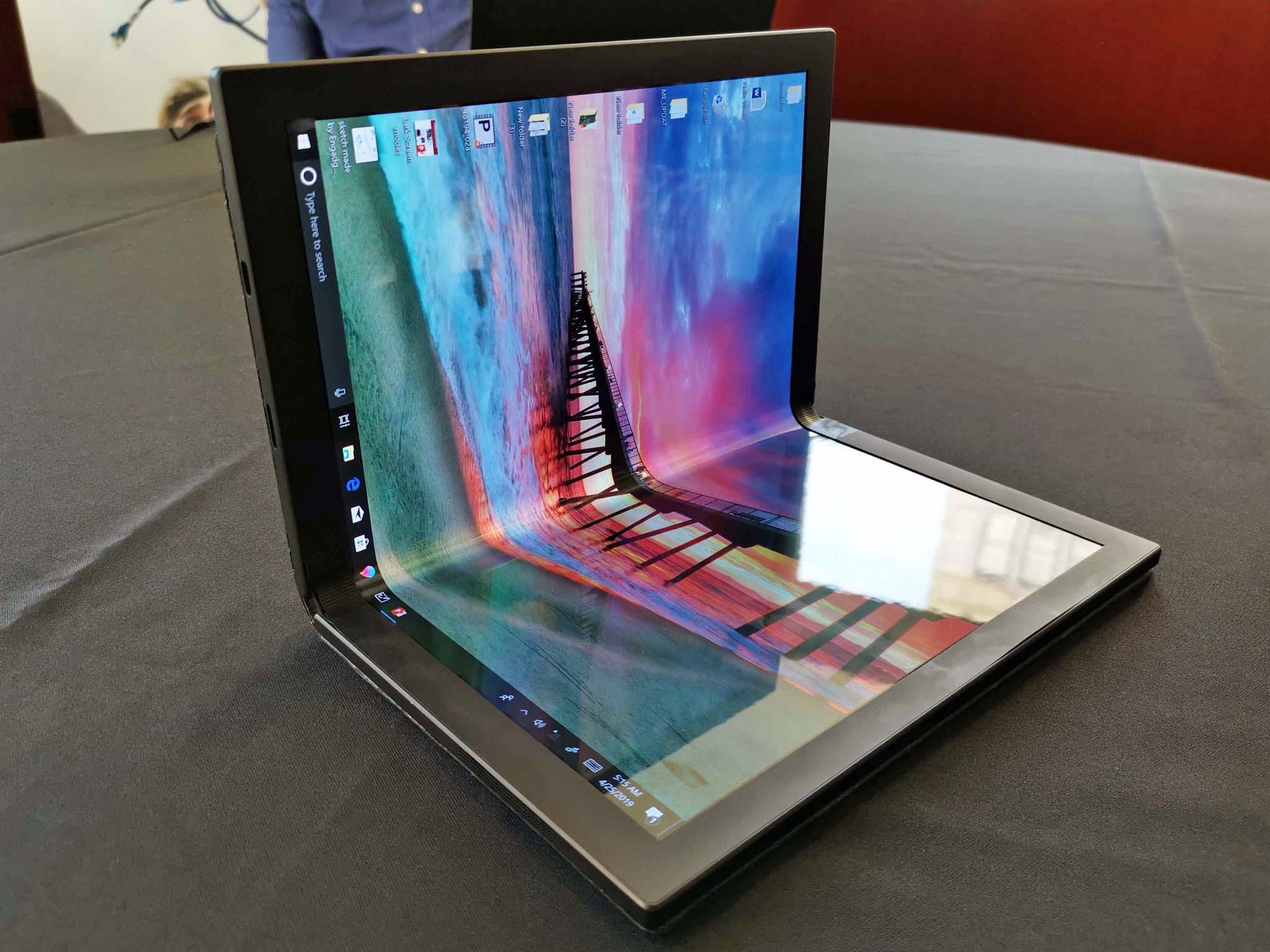
Using the foldable PC was remarkable. Closed, it looks and feels just like a hardcover book or moleskin especially with the leatherette wrapping. The pen attaches nicely to the exterior and the total size when closed is half that of an Ultrabook laptop. The weight was ideal – not heavy at all.
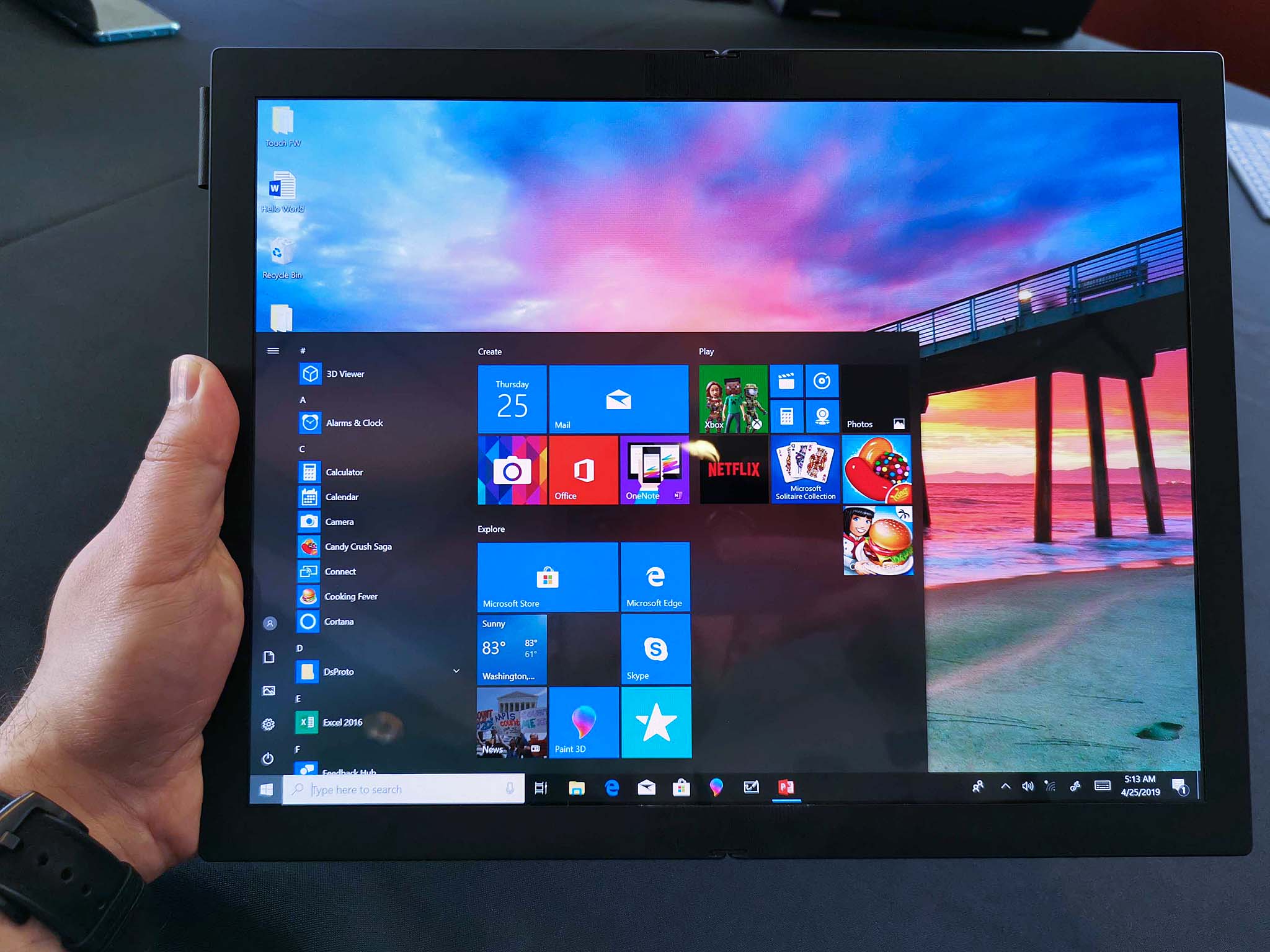
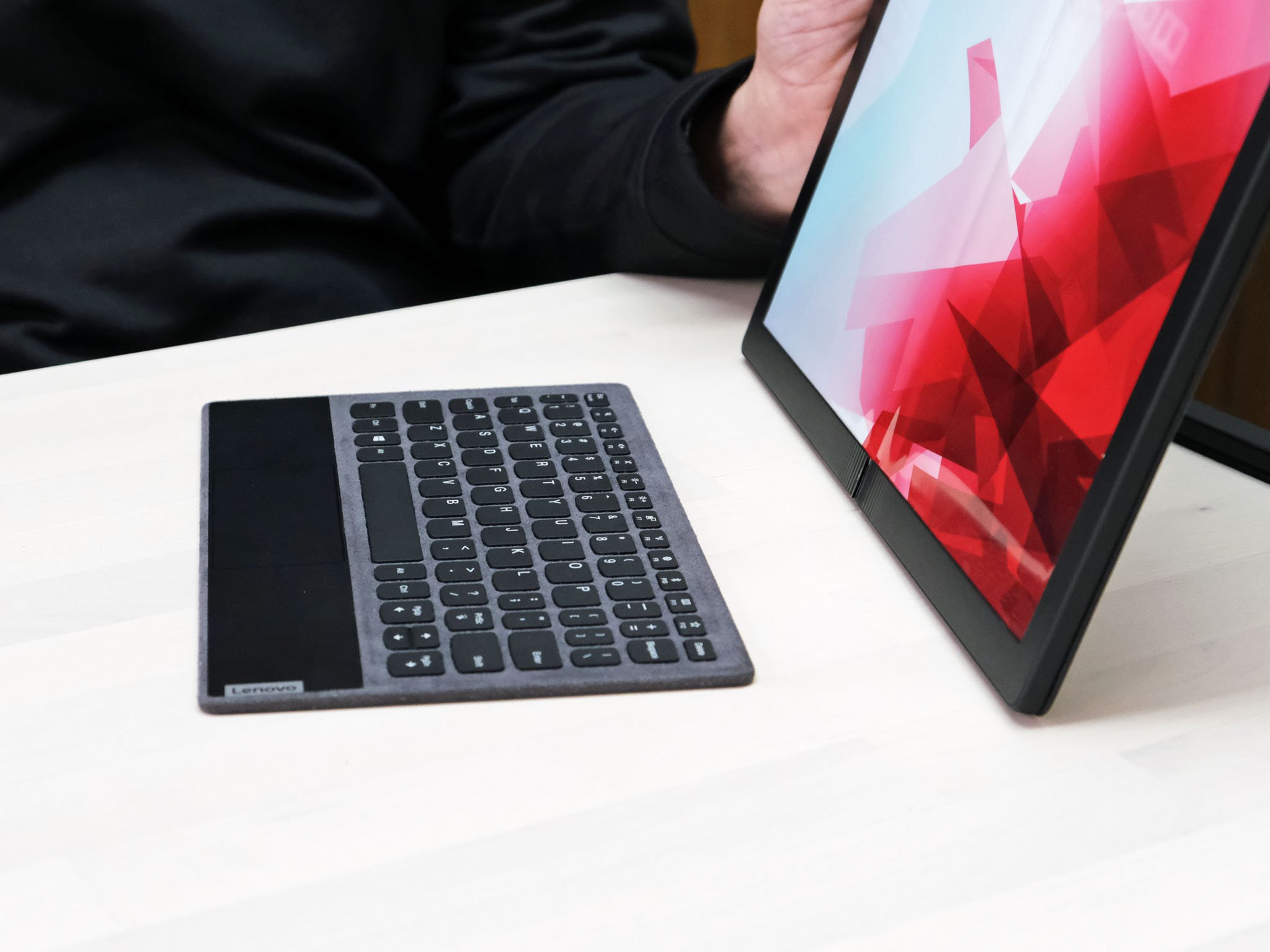
Unfolding the display reveals a drop-dead gorgeous screen. Even if this PC didn't fold, its 2K OLED display would stand out on its own. There's no perceptible airgap, colors are bright, and inking was one of the best experiences I've had thanks to Wacom AES. Folding the display halfway and turning it into a clamshell PC was fun. Half the screen turns into a virtual keyboard letting the device mimic a small laptop (think Surface Go size).
Even if the screen didn't fold, this 2K OLED display would stand out.
Adding things like 4G LTE, stereo speakers, Windows Hello and the ability to plug into modern accessories, even docking it to make it a "desktop" PC, all felt natural. While traditional 2-in-1 PCs let you jump between tablet, laptop, and presentation modes this device has even more adaptability.
There are still questions though. For instance, while folding into a book to read will be great it's not clear what you will read on it. Microsoft just killed its book store and Amazon's Kindle app is not on the Microsoft Store. Microsoft and Amazon, though, are closer than ever so maybe a new app for Amazon Kindle could be coming later this year. If so, Microsoft could feature that app on this PC.
Battery longevity is also unclear, but if it is using Intel's 10nm chipset that could help equal things out. Lenovo says it will get "all day" battery life and it features Quick Charge technology, but it's still too early to peg exact hours of usage.
Finally, there is the cost. The Samsung Galaxy Fold costs $2,000, which is also about what a good laptop costs these days. There's little reason to think that Lenovo's foldable PC will be cheaper. On the contrary, the price could be significantly higher, but we do not know yet.
Year 2020 and beyond
Foldable PCs more to come
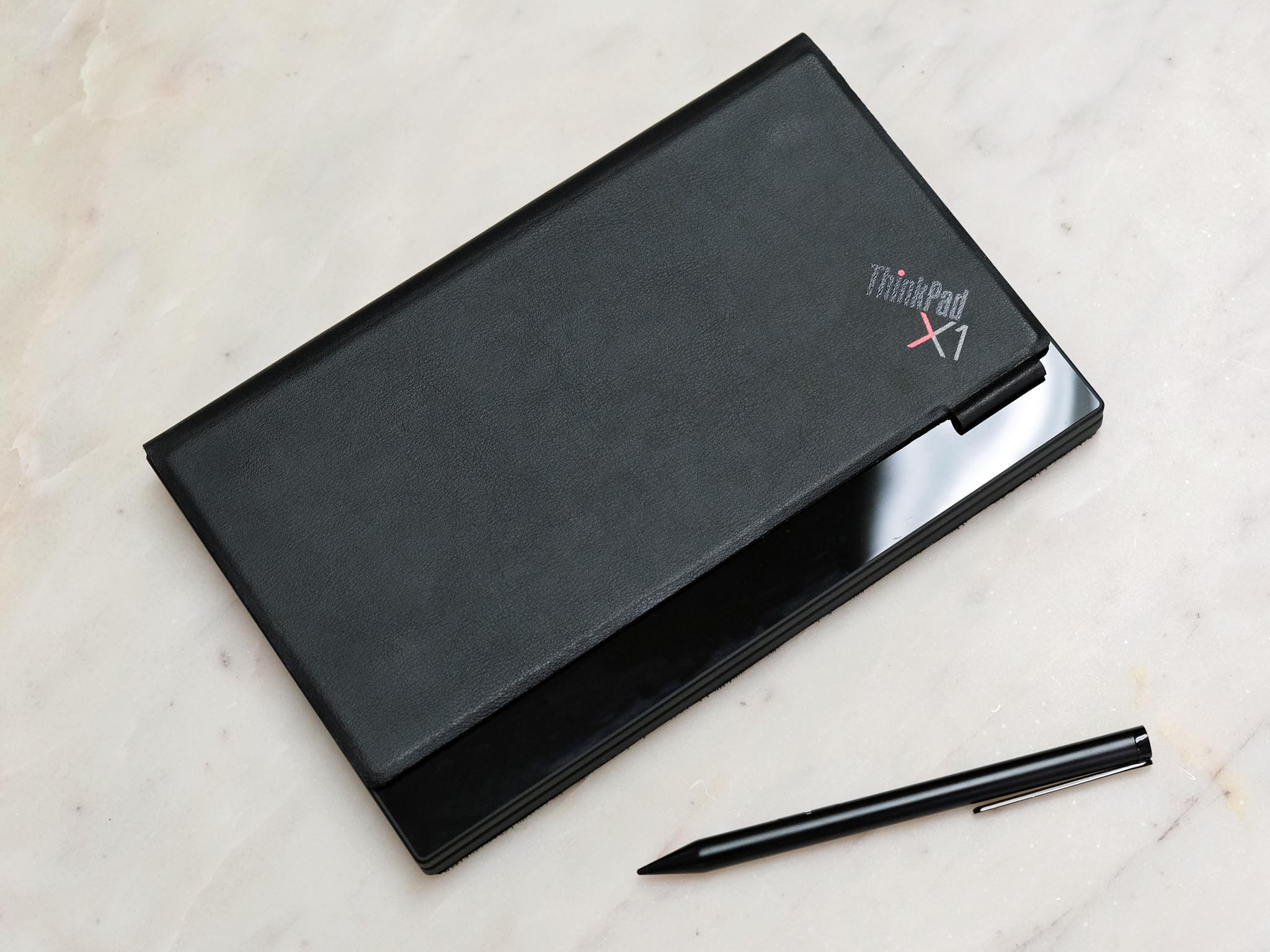
It's important to remember that while Lenovo is the first to announce a foldable PC, it is unlikely to be the last. Our sources tell us that this is but one device of a change in thinking in computing that will be taking place in the next few years. PCs will be lighter, thinner, faster, and more adaptable as cloud computing becomes a reality. Dual screens, foldable displays, ARM processors, Intel CPUs, and Windows Core OS will usher in this era.
Based on how impressive this thing is, we can't wait to see what the future holds.
Microsoft reportedly has "Centaurus" in the works for this fall – another dual-screen, foldable PC running Windows Core OS. Other manufacturers – including Dell, HP, or Huawei – could also release such PCs. The more significant point is that this is a concerted effort by Microsoft and its partners to launch this category, like the push for convertible PCs in 2012.
That effort also means we'll see different designs, features, specifications, and price points. While a foldable Surface would be the most expensive, Lenovo's ThinkPad foldable would likely be cheaper and aimed more towards mobile professionals.

Lenovo promised more details on its foldable ThinkPad X1 PC in the coming months heading up to its planned 2020 release. We're also still waiting on Microsoft to unveil Windows Lite – including its ability to run Win32 applications. Such an announcement seems likely for October.
For now, we have the promise of the world's first foldable PC to hold on to, and based on how impressive it is, we're OK with that.

Daniel Rubino is the Editor-in-chief of Windows Central. He is also the head reviewer, podcast co-host, and analyst. He has been covering Microsoft since 2007 when this site was called WMExperts (and later Windows Phone Central). His interests include Windows, laptops, next-gen computing, and wearable tech. He has reviewed laptops for over 10 years and is particularly fond of 2-in-1 convertibles, Arm64 processors, new form factors, and thin-and-light PCs. Before all this tech stuff, he worked on a Ph.D. in linguistics, performed polysomnographs in NYC, and was a motion-picture operator for 17 years.
